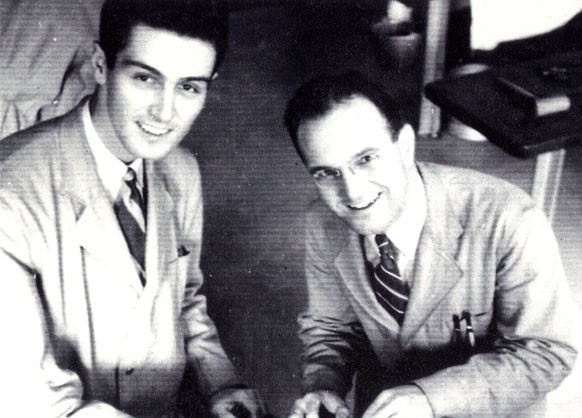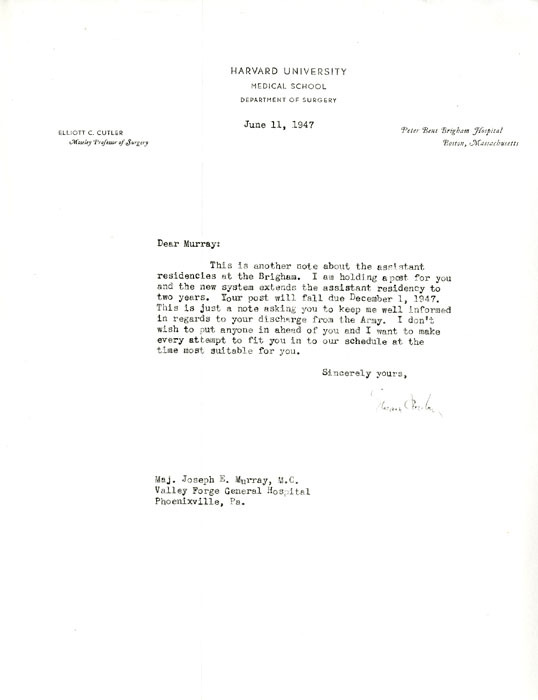Student and Soldier
Joseph Murray entered Harvard Medical School after graduating from College of the Holy Cross in 1940. He initially intended to return to his home town of Milford after graduation to become a family doctor, but instead became fascinated with research after looking at cells under a microscope during a second-year pathology class on inflammation. The United States' entry into World War II resulted in an accelerated course schedule, so Murray graduated in three and a half years instead of the usual four.
After gradudating from Harvard Medical School as a member of the Class of 1943B, Murray completed his internship at Peter Bent Brigham Hospital and then entered the United States Army Medical Corps in 1944. He served at Valley Forge General Hospital, Phoenixville, PA during World War II, working with surgeon Bradford Cannon (1907-2005) on plastic surgery and burn care. It was there, observing how donor skin grafts on badly burned soldiers were rejected by their bodies, that Murray first became interested in organ transplantation. In his autobiography, Murray describes how he received his assignment:
While I was in line ... I could not help but overhear the Sergeant-in-Charge from the Women's Army Corps (WAC) assigning each and every person in front of me to overseas duty. I approached the front of the line with trepidation. Just as I stepped up to the desk, a phone call came in. The WAC answered and said, "Oh yes, I'll see about it." She looked up at me and said an assignment had just opened up at Valley Forge General Hospital ... "Would you like it?" she asked me. "Yes" I almost shouted, hardly believing my good fortune.
After the Japanese surrender in August 1945, the staff at Valley Forge General Hospital began to be released from military duty. However, Murray was retained due to his experience in plastic surgery. He received assurances from Elliott Cutler, the Surgeon-in-Chief at Peter Bent Brigham Hospital, that he would have a place on staff as soon as he was released. Though Cutler died before Murray was released, his promise was kept and Murray started as an Assistant Resident under the new Surgeon-in-Chief, Francis Moore.



